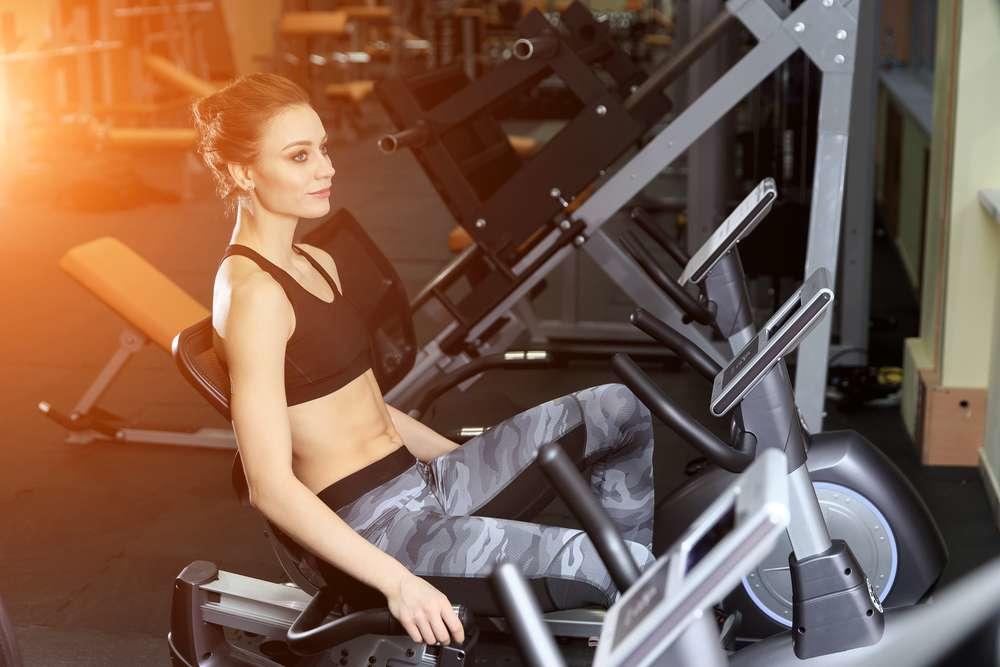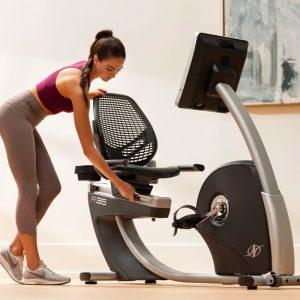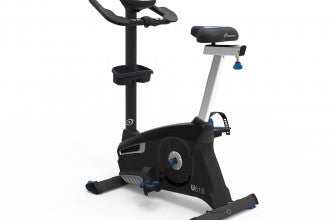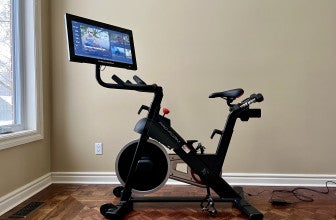Are you a cyclist at heart? Can’t get enough of the road? But perhaps you are now struggling with the fact that the weather is turning or you are just too busy to continually haul out your bike and go for rides outside. Or, perhaps you just want a change of pace now and then.
Whatever the case may be, you may be considering two options: recumbent bike vs. stationary bike.
Which one will help you meet your needs best? Which ones will go the distance and transform your fitness level? Which one is right for you?
Let’s answer these questions and more with our comparison of the recumbent bike vs. stationary bike.
| Pros | Cons | |
| Recumbent Bike | ~low injury risk
~great for cross training ~easy to use ~ideal for those with low back pain ~better for older exercisers ~less risk of knee injury ~superior hamstring activation ~better glute muscle involvement |
~little to no core activation
~no upper body involvement ~less emphasis on the quads ~fewer transfer over benefits |
| Stationary Bike | ~better core recruitment
~good transfer over benefit to outdoor cycling ~great for sprinting ~slight upper body involvement ~easy to use ~good for athletes ~excellent quad strengthening benefits |
~saddle sores may be an issue
~could lead to lower back pain ~shoulder and kneck pain is also not uncommon ~may cause muscle imbalances in the legs ~could lead to overtraining if done with regular outdoor cycling |
Now that you can see some of the pros and cons, let’s look at a few more need-to-know details about the recumbent bike vs. stationary bike.
Injury Awareness

So how do these rank as far as injuries go?
The stationary bike dose pose a bit of a larger threat in potential injuries than the recumbent bike does. This is largely because of the position you’re in while sitting on the bike. With the recumbent bike, you have the back rest to lean against, so this is going to take some of the downward stress off the back vertebra, as well as the tailbones.
If you’ve ever done a little too much bike riding, you likely know all too well how this works. You’re going about your business and the next day, you can hardly sit down. This is because those tail bones are inflamed and sore form all the downward pressure that was placed on them. The next time you go to bike, it might feel like your bum is on fire. Saddle sores, as they’re typically called, are all too common with biking enthusiasts.
Looking at knee injuries, the stationary bike is also going to place you at a higher risk here as well because of the nature of the movement pattern. With the recumbent bike, your hamstrings and quads are working together quite nicely, while with the stationary bike, it’s largely just the quads. This can create unnatural pulling forces along the quad muscle, which can then cause these tendons to become upset.
The knees are also going to be at a greater angle when doing stationary cycling versus recumbent biking, so this can also increase the sheer tension forces on that knee joint.
So all in all, you’ll want to pay special close attention to injuries if you are on the stationary bike and take care to address any as soon as they start.
Calorie Burning Benefits
Now we need to look at the calorie burning benefits that each of these bikes has to offer. Both bikes, assuming you can exercise at a similar intensity level with each of them, will burn approximately the same number of calories. Both are using a similar movement pattern, it’s just the angle you are sitting at that is going to be different for each one.
This said, it’s important to keep in mind that you might find that you can push harder on one bike over the other, so this could then factor into your calorie burn. For example, if you were to perform the upright bike and could easily move into sprints, hitting an exertion level of 10 on a scale of one out of ten but can’t quite get there on the recumbent bike because you just don’t feel as comfortable, this could impact the fat burning abilities you receive from this bike.
Comfort is king when it comes to choosing your exercise. Note that this doesn’t mean choose whichever feels easier – it’s about choosing which one feels most natural for your body.
Target Musculature

The stationary bike is going to call the upper body muscles into play to a slight degree thanks to the fact that they will be required for stabilization and holding onto the handlebars as you bike.
With the recumbent bike, it’s strictly lower body involvement. Your core isn’t going to be worked either, and neither are the lower back muscles.
So if you want to get as much bang for your time invested, choose the stationary bike over the recumbent bike.
Looking at the lower body, both bikes will work the hamstrings and quads, however the upright bike is going to place far more emphasis on the quads, while the recumbent bikes uses both quads and hamstrings, and may also involve the glutes to a higher degree as well.
Transferability
Finally, if you are an outdoor cyclist and want to see transfer benefits, the stationary bike is going to be the clear choice. It’s this bike that has you doing a similar movement pattern, so as you progress with it, you should progress with the other bike as well.
This said, do keep in mind that if you are doing too much indoor and outdoor cycling, this could lead to overtraining, so for that reason, for some people, the recumbent bike is better as it provides a bit more of a cross training effect.
So there you have the differences and similarities between the recumbent bike vs. stationary bike. Consider all these factors as you make your purchase decision and always remember, you first and foremost want to like the exercise equipment you purchase, so take your preferences into account as well. They do hold strong merit.
Photo credit: Denys Kurbatov/Shutterstock; Lenar Nigmatullin/Shutterstock; Kzenon/Shutterstock





